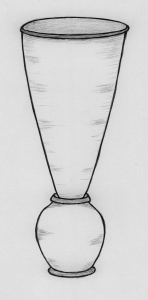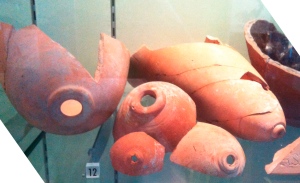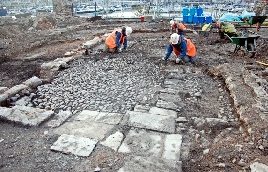*********
|
Unusually, this page is "in progress". The index shows what I hope to achieve, but I'll be adding text to the page as I research each dig. See the links on the Locations page that may give more details of the working sugarhouse. |
|
Index ... BRISTOL - Cherry Lane |
|
*********
|
BRISTOL - Cherry Lane Data ... Summary ... |
|
BRISTOL - Tucker St Data ... Summary ... |
|
BRISTOL - Westbury-on-Trym (a pottery) Data ... Summary ... |
|
CHESTER - Bridge Street Data ... Summary ... |
|
DUNDEE - Seagate Image (on p.3) Data ... Summary ... # Full report and analysis now published as 'The Dundee Sugar House, Seagate, Dundee' by David Perry with contributions by Derek Hall and Richard Jones, in Tayside and Fife Archaeological Journal, vol 19-20 (2013-2014), pp103-18. |
|
EDINBURGH - Canongate 
Data ... Summary ... |
|
EXETER - Goldsmith Street Data ... Summary ... |
|
(HULL - Lime Street) 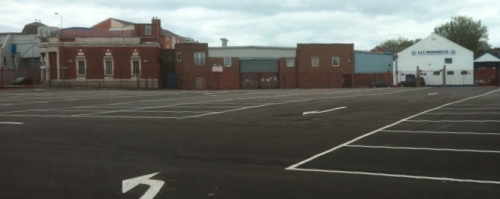
Data ... Summary ... |
|
LANCASTER - Phoenix St Data ... Summary ... |
|
LIVERPOOL - Manchester Dock
Data ... Summary ... |
|
LIVERPOOL - South Castle Street Data ... Summary ... |
|
LONDON - Deptford Data ... Summary ...
|
|
LONDON - London Hospital Medical College Data ... Summary ... |
|
LONDON - Morocco Street, Southwark Data ... Summary ... |
|
LONDON - Mortlake Data ... Summary ... |
|
LONDON - Old Paradise Street, Lambeth Data ... Summary ... |
|
LONDON - Patience Street, Bishopsgate Goods Yard Data ... Summary ... "The crowded living conditions were exacerbated by various trades and small-scale industry undertaken within the same buildings. ... Evidence for other small-scale industries included ... fragments of moulds and syrup collecting jars for processing sugar imported from the plantations in the West Indies." (Birchenough), which rather plays down the quantity of sherds present. I've found no recorded evidence for a sugarhouse existing in this immediate vicinity. The ceramics cover a long period from the 17th to 19th centuries, but even though they cover the London refining years, that's a long time for any sugarhouse or sugarhouses to be running on one site and not be noticed. Identifying sites before 1700 is very difficult, but, in general, refining did not move out of the City in any big way until around 1750, no new sugarhouses were built there after about 1810 and the last closed in 1853. The first sugarhouse east of the City was in Angel Alley (half a mile south of this site) in 1719 and the alley was still refining in 1830. |
|
LONDON - Prescot Street Data ... Summary ... |
|
LONDON - St Mary Axe Data ... Summary ... |
|
LONDON - Swan Street, Southwark Data ... Summary ... |
|
LONDON - Upper Thames Street Data ... Summary ... |
|
LONDON - Whitechapel Road Data ... Summary ... |
|
LONDON - Woolwich Data ... Summary ... Extra note ... |
|
PLYMOUTH - Cockside
Data ... Summary ... This was the sugarhouse of Samuel Buttall, followed by his son Humphrey ... from the 1660s through to the 1720s. |
|
SOUTHAMPTON - Gloucester Sq 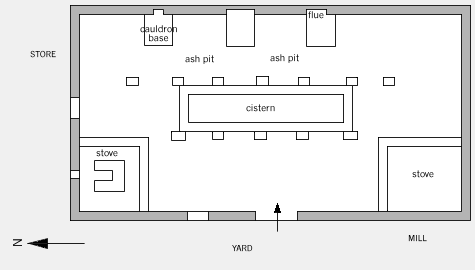
Data ... Summary ... Fragments of pottery were few. The 15,000 pots and moulds for sale at closure were either purchased for use, dumped elsewhere as hardcore, or possibly transferred to the Brissault refinery in London. There were "152 fragments of conical vessels, 10 fragments of thick-based pots, all made in a red fabric, derived from 3 adjacent excavations" (Drake) - the sugarhouse itself, sealed into the yard surface and along the access lane running west from the yard. |
|
YORK - Skeldergate 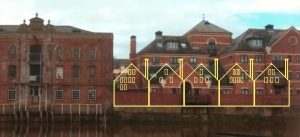
Data ... Summary ... In 1983, on the same site immediately north of the Bonding Warehouse, "... two trenches were laid down through areas straddling the Trust's 1972 excavation." [Research shows that John Taylor ran the Skeldergate sugarhouse from 1680 to his death in 1709, and it was sold for the building of the Dutch-gabled wine vaults in 1719.] |
|
MONTSERRAT, WI - Galways Data ... Summary ... "During the 1981 season effort was concentrated on a 1.5 acre portion of the central complex occupied by the boiling house, cisterns, cattlemill and windmill. ... the boiling house was the first structure to be examined: it is the physical centre piece of the complex; it is a particularly imposing and beautifully constructed building which has long been admired ... . |
*********
|
|
|
|
